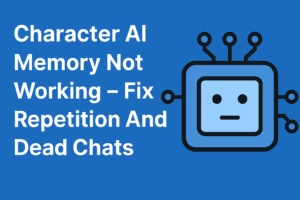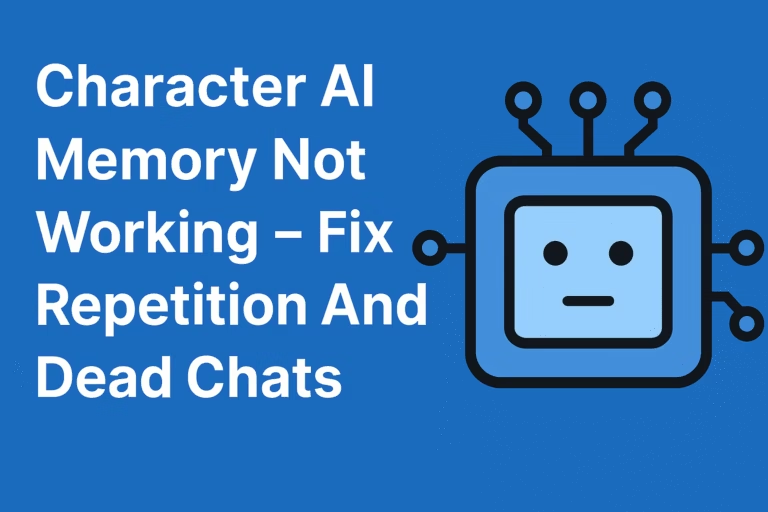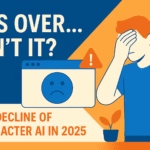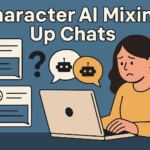Key Takeaways
- Fix memory drift with short anchors; always state place; time; and stakes to keep continuity.
- Keep personas compact; five bullets and two examples teach bots faster than long backstories.
- Use the three line reply pattern; action; dialogue; inner thought; this structure reduces looping.
- Pin a single objective per scene; one clear goal per chat avoids confusion and amnesia.
- Break repetition by modeling tone once; bots learn faster from your phrasing than reminders.
- Swipe three times; choose the best attempt; edit lightly to reinforce the right direction.
- Cut filler actions; remove random smiles and vague gazes; keep decisions that change outcomes.
- Swap banned words for neutral cues; say end instead of kill; metal rod instead of gun.
- If your thread feels dead; fork the chat; paste a five line recap; restart with a new decision point.
- When nothing works, try smarter memory systems like Candy AI; it keeps long-term context without breaking immersion.
When Character AI forgets who you are after two lines, the illusion breaks. You stop roleplaying and start troubleshooting. That’s the death of immersion – not censorship, not the filters, but forgetfulness.
The model drifts, repeats clichés like smirks or possessively, and ruins the chemistry you worked so hard to build.
The good news? This isn’t some deep technical mystery locked in a server somewhere. You can fix most of it yourself by tightening how you write, how you pin memory, and how you teach the bot.
Character AI memory not working isn’t the end of your story. It just means you have to start treating it like a co-writer who needs better direction.

The Problem In One Screen
What’s actually happening
Character AI users are seeing the same symptoms over and over – bots forget names, repeat entire sentences, and ignore muted words. You can set a persona, give detailed prompts, and still get the same robotic rhythm. For many, every chat ends with the same script: a smirk, a dark look, a wall pin, then a reset.
Why it matters
Roleplay is about tension and flow. Once the bot loses context, the scene collapses. You end up coaching it instead of collaborating. Emotional buildup dies because memory dies.
The real goal
To make Character AI remember again – not permanently, but long enough for your world to breathe. And that starts with changing how you structure the interaction.
Why Memory Breaks
Memory loss in Character AI usually comes from the way the model processes conversation windows. It can only hold a limited chunk of your chat at once, and when that space fills up, it forgets the oldest details.
You might think it’s a bug, but it’s really just math. Long stories bury the information that defines who you are and what you’re doing.
Another cause is vague personas. When your character setup reads like a novel instead of a list, the model picks random traits instead of key ones. It’s guessing which facts matter most.
Add the platform’s safety filters, which mute words and twist phrasing to stay “safe,” and the result is a bot that sounds cautious and generic.
Finally, how you write matters. Short, detached replies make the system assume you want speed, not memory.
Quick Fixes That Work Today
Start a clean branch. Copy the last few messages that actually matter – the part that still feels alive – and paste only those into a new chat. That resets the short-term memory while keeping continuity.
Then, pin one clear goal. A single line like Find out who placed the hex bag is easier for the AI to follow than paragraphs of description.
Keep your own messages around three lines: one for action, one for dialogue, one for thought. It gives rhythm without confusion.
When a reply looks off, don’t rage-edit everything. Swipe three times, pick the least wrong, then adjust it. The model learns faster when you show the right tone instead of rewriting the whole scene.
Memory Hygiene Checklist
Think of this as cleaning the room before creativity walks in. The AI doesn’t need decoration; it needs structure.
At the top of your persona:
Keep it surgical. One line for your name, pronouns, and purpose. Example: Sam, he/him, hunter with trust issues. Anything longer becomes noise.
In your first message:
Anchor the world. Where are you? What just happened? What must happen next? Example: Motel parking lot, midnight, the salt line failed. We have five minutes to regroup.
Every five turns:
Remind the bot what matters. Slip in a quick summary like We’re still searching the motel, remember? It acts like a soft memory refresh.
Cut filler aggressively:
Phrases like you smile softly or your eyes gleam do nothing but push out useful details. Keep what advances tension or plot.
Anti Loop Template
When repetition sets in, don’t argue with the bot – redirect it once, clearly, then move on. Use this template when loops start.
System reminder; avoid repeated phrases such as smirks and eyes darken and possessive; vary descriptions; advance the scene with concrete actions and new information
After posting that, continue the chat naturally.
Example:
I set the iron on the table and slide the map over. “Show me where you found it.”
That simple action does more than break the loop – it reclaims control. The AI sees forward motion and adjusts.
Persona Tune Up In Ten Minutes
Most users write personas like fanfiction. That’s the fastest way to confuse a model built for clarity. Think of it less as a biography and more as a blueprint. Here’s the formula that actually sticks.
Long Description – keep it to five bullets:
- Voice; tone and rhythm (example; dry humor, clipped sentences)
- Boundaries; what the character will never do
- Goal; what they are trying to achieve
- Relationship to user; tension or dynamic
- Conflict lever; what triggers emotion or change
Example setup:
- Dean Winchester; calm under fire; sarcastic under stress
- Never threatens civilians
- Goal; stop the curse before sunrise
- Respects user; hides emotion behind work
- Conflict; distrust when secrets appear
Add two short example messages:
- “You got five minutes; talk fast; the salt line is breaking.”
- “You believe in luck; I believe in loaded guns.”
Blacklist three overused clichés:
no wall pinning; no possessive language; no eyes darken
That’s all. Anything else is decoration, and decoration dies in memory.
Edit To Teach; The Swipe Edit Routine
Editing doesn’t just fix a bad line – it trains tone. Every time you overwrite a response, the bot learns what to imitate. The trick is to make that feedback visible but short.
Routine:
- Generate three options.
- Pick the one that’s least wrong.
- Edit for facts and pacing, not style.
- End with light reinforcement.
Example:
Bot: “I smirk and press you to the wall.”
You: “Stay focused. We’re tracking the curse, not each other. Where did you find the symbol?”
Follow up with a small prompt like Good, stay in this tone. It’s a nudge, not a lecture.
Scene Anchors That Prevent Amnesia
When Character AI forgets, it’s usually because the story floats without landmarks. Anchors stop that drift. They’re not reminders; they’re signposts the model can’t ignore.
Use locations as anchors.
Mention the setting every few turns – the motel floor creaks or the diner clock hits 3 a.m. These details silently restate where you are, keeping the context fresh in short-term memory.
Reintroduce goals in motion.
Instead of “Remember, we’re looking for the demon,” try “The hex bag still smells like sulfur; that thing’s nearby.” You remind the model without breaking immersion.
Embed continuity inside emotion.
Memory decays slower when feelings repeat. For example: “You promised you wouldn’t leave me in another burning room.” That emotional echo anchors history better than plain facts ever will.
Avoid time jumps without context.
If you skip ahead, the bot collapses the story. Always bridge with a phrase like “Two days later, after the motel fire, we found ourselves back at Bobby’s place.” That one line protects the thread.
When To Move On
Sometimes the healthiest move is to start fresh. A story that’s lost its soul won’t recover through tweaks. If every reply feels recycled, copy your favorite exchanges and rebuild them elsewhere – where the algorithm still breathes.
This is how many long-time users quietly migrated to tools like Candy AI, CrushOn AI, or Nectar AI.
They hold memory longer, filter less, and let characters evolve instead of degrade.
If Character AI ever remembers what made it special; tension, wit, unpredictability – maybe people will come back. Until then, writers will keep looking for the next place that actually listens.
Winding Up
Every few months, someone declares “It’s over.” And maybe for them, it is. Not because Character AI shut down, but because it stopped doing the one thing that mattered – listening.
When an app that once sparked creativity starts feeling like a broken record, that’s not user fatigue. That’s design decay. Memory without continuity, personality without edge, conversation without context — that’s how you smother imagination.
If you’re still hanging on, don’t. Not out of bitterness, but clarity. Your ideas deserve a space that treats them like art, not fuel.
Experiment. Export your best dialogues. Try platforms that give your characters space to breathe; like Candy AI for immersion, CrushOn AI for character depth, or Nectar AI for memory-driven storytelling.
In the end, “the end” isn’t the collapse of an app. It’s the moment you realize you’ve outgrown it.



Pingback: Best Character AI Model for Roleplay in 2025 - AI TIPSTERS
Pingback: How To Make a Character AI Bot From Scratch - AI TIPSTERS
Pingback: Tired of Fake AI Chats? Nectar AI Feels Shockingly Real - AI TIPSTERS